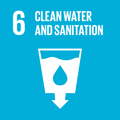- Docente: Attilio Castellarin
- Credits: 6
- SSD: ICAR/02
- Language: Italian
- Teaching Mode: Traditional lectures
- Campus: Bologna
- Corso: First cycle degree programme (L) in Environmental Engineering (cod. 9198)
Learning outcomes
This course contributes primarily to the students' knowledge of basic principles for the design and management of the principal hydraulic structures.
Course contents
Water supply systems
Water demand. Population estimates. Municipal water quantities and requirements. Water supply: spring water captation, groundwater captation, captation from rivers and reservoirs. Design and analysis of water adduction and distribution systems: dead-end and loop networks. Storage reservoirs. Pumping stations. Distribution pipelines.
Drainage collection systems
Overview of drainage systems. Network types. Pipelines cross-sections. Flow velocity bounds. Wastewater and storm water flow analysis. Critical events. Design and verification of drainage systems. Rating curves in closed conduits. Sewage pipe materials and construction. Special structures (syphons, manholes, flushing tanks, connection with residential appliances). Peak flow reduction systems. Lateral weirs.
Prerequisites
A prior knowledge and understanding of pressurized flow and open channel hydraulics is required for profitably attending this course.
All lectures will be held in Italian. It is therefore necessary to understand the Italian language to successfully attend the course and to be able to use the educational material provided.
Readings/Bibliography
- Citrini, Noseda, Idraulica, Editrice Ambriosiana, Milano.
- Da Deppo, Datei, Fiorotto, Salandin, Acquedotti, Editrice Cortina, Padova.
- Maione, Le piene fluviali, La Goliardica Pavese, Pavia.
- Moisello, Idrologia Tecnica, La Goliardica Pavese, Pavia.
- Da Deppo, Datei, Salandin, Fognature, Editrice Cortina, Padova.
- Paoletti, Sistemi di fognature e di drenaggio urbano, Edizioni CUSL, Milano.
Teaching methods
Classes and practical activities, also developed in a PC-Lab facility.
Assessment methods
NEW: Precautional measures for limiting COVID-19 outbreak (in Italian)
The learning assessment aims verifying the achievement of learning objectives, i.e. to know the basic concepts for the design of standard hydraulic structures in water supply systems and urban drainage networks.
The exam generally consists in a written test (or include at least a written exercise), which includes theoretical questions, true/false quizzes, and exercises, which are analogous to those carried out in the classroom during the course. A number of exam dates will be set during the academic year (registration is needed at Almaesami), whose structure is similar to the tests. Students might also decide to take an oral exam in addition to the written tests, if the written test is passed. Before registering to an exam, student are kindly requested to submit a short report on the exercises carried out in the PC-lab LAB6 during the course (XLS/PDF file sent via email).
The final grade of the integrated course 31470 - HYDROLOGY AND HYDRAULIC INFRASTRUCTURES T is defined as the average of the marks obtained in modules 31473 - HYDRAULIC INFRASTRUCTURES T and 31472 - Hydrology T.
Teaching tools
Handouts on the topics covered in the course and exercises are published in the repository Insegnamenti OnLine - AlmaDL University of Bologna only for registered students and during the classes.
Links to further information
https://twitter.com/AttiCastellarin
Office hours
See the website of Attilio Castellarin
SDGs



This teaching activity contributes to the achievement of the Sustainable Development Goals of the UN 2030 Agenda.
